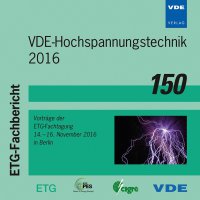Electrostatic investigations for characterization of HVDC insulation systems
Conference: VDE-Hochspannungstechnik 2016 - ETG-Fachtagung
11/14/2016 - 11/16/2016 at Berlin, Deutschland
Proceedings: VDE-Hochspannungstechnik 2016
Pages: 6Language: englishTyp: PDF
Personal VDE Members are entitled to a 10% discount on this title
Authors:
Schierding, Carola; Hilbert, Michael; Kurrat, Michael (TU Braunschweig – elenia, Braunschweig, Germany)
Moeckel, Dieter; Thedens, Martin (PTB Braunschweig, Braunschweig, Germany)
Abstract:
The increasing number of large renewable energy sources for the power supply and the subsequent integration of the energy producers' associations, such as offshore wind and photovoltaic parks, are major challenges of our time. The high voltage direct current (HVDC) is seen as a key technology for realizing pan-European, or even further, grid structures for improved and intelligent exchange of energy. It aims to ensure a low-loss transport of electrical energy over large distances. For the reliability of the HVDC grid, design of the insulation system is an important aspect. The stress of the insulation systems at DC and AC voltages differs greatly. Other effects and loads such as volume conductivity and surface charges mainly occur with DC voltages. The study of these effects is difficult due to the multi-parameter dependence (humidity, temperature). For the determination of these effects the environmental conditions have to be controlled, as can be done in a climatic test chamber. Here defined charge quantities are applied to insulating surfaces with a fakir-electrode. The measurements of the applied electrostatic surface charge were done indirectly with an electric field meter. To analyze the influence of the surface charge on the flashover distance different model geometries and insulating materials were considered. As a simple test method, the flashover distance to a grounded discharge electrode is measured to characterize the electric field strength produced by surface charges. Parameter studies are undertaken for evaluation of different variables, as mentioned above. Finally values for the changed variables can be deduced which will be used for parameter investigations in further studies. As a main result the critical values, at which the highest electrostatic flashover distances occur, are presented.


